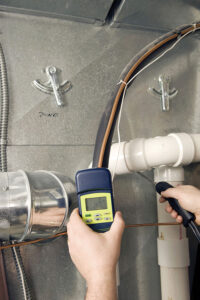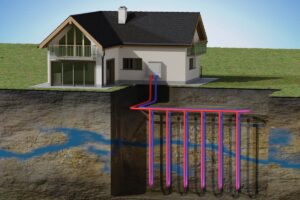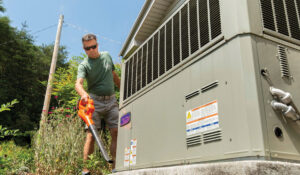
What if I told you that baking cookies could be bad for your health, would you believe me? Along with the wonderful aroma of fresh baked cookies wafting throughout the home could also be carbon monoxide (CO). I can tell you first hand, you will never know when you are overcome with CO. In my 15 years of testing in homes and buildings, I have passed out cold from CO poisoning twice and almost a third time. The only thing that saved my life both times was that I fell on the floor where there was fresh air. So I take CO poisoning very seriously.
Let’s talk carbon monoxide detectors. Whether you are a homeowner, renter or landlord you should read the Illinois Carbon Monoxide Alarm Detector Act. This informs all parties what their responsibilities are regarding the installation and maintenance of residential carbon monoxide detectors.
According to the Illinois Department of Public Health, two-thirds of all accidental CO poisoning deaths involve automobiles, and one- third from faulty heating appliances, improper venting or unvented space heaters. Gas heating systems, especially older systems, should have routine maintenance checks by a qualified service technician. Mark it on your calendar.
IMPORTANT! Those most at risk for CO poisoning are: infants or small children, women who are pregnant, elderly, and anyone with heart or lung disease or other respiratory problems. Side note – small animals will be affected first due to their minimal lung capacity.
Most people are unaware that there are two types of CO detectors, high and low level. All the detectors at local retailers are high level CO detectors and sell for $10-$40. High level CO detectors must meet the UL-2034 standard for use in homes. This standard was developed to reduce false alarm calls for first responders. The problem with this standard is that you can suffer from low level CO poisoning (less than 30 ppm) and be very sick. This is not a good standard for people that are considered to be “high risk” or if you don’t leave home often.
UL-2034 High Level Carbon Monoxide detector thresholds:
• 30 ppm or less, no alarm before 30 days
• 70 ppm 1 – 4 hours
• 150 ppm 10 – 50 minutes
• 400 ppm 4 – 15 minutes
Low level detectors cost more, $150-$250, but will alarm starting at 10 ppm instead of 70 ppm. If anyone in your family may be considered high risk and you would like more information on low level CO detectors, CO-Experts are the low level CO detector pioneers. Go to www.coexperts.com.
Installation and maintenance: Follow the manufacturer’s recommendations for the location and number of detectors you need. Replace the batteries once a year, and be aware of the “End of Life Notification.” This is your detector letting you know it has reached the end of it life and is no longer protecting you.
All electric homes: I believe there should be at least one CO detector in every home to detect CO that comes from outside the home such as attached garage, charcoal or gas grills, lawn mowers, gas powered equipment or portable generators. Far too many fatalities occur during power outages from the improper use of portable generators. To learn more on the proper use of portable generators please visit www.safeelectricity.org.
Prevent CO poisoning: Never use ventless heaters in the home (except electric) and never use your oven for heating. Annually, have your water heater and furnace serviced by a qualified technician, inspect fireplaces,

woodstoves, flues or chimneys and clean the dryer vent. Never heat your garage with the same furnace as your home. Be aware of CO when using portable power equipment or generators and if you are high risk consider installing a low level CO detector.
Carbon monoxide is a colorless, odorless, tasteless toxic gas produced by incomplete combustion of natural gas, propane or wood. Early symptoms of CO poisoning can mimic the flu including: headache, nausea, vomiting and dizziness. More significant poisoning symptoms are: throbbing headache, drowsiness, confusion, heart irregularities. If you think you might be experiencing CO poisoning do not hesitate. Get everyone out of the building to fresh air and call for help.
For more information go to:
Illinois Department of Public Health – www.dph.illinois.gov
Illinois Poison Center –
www.illinoispoisoncenter.org/carbonmonoxide
COSA – Carbon Monoxide Safety Association – www.cosafety.com








